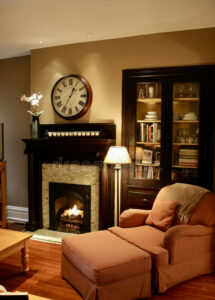These notes are based upon the meeting we had on 06/3/23 and are the conculsions we have come up with so far. More information about the phenakistoscope is in Ruxin’s Room Concept here.
The Narrative
This game is about discovering lost memories, through remembering old feelings and experiences in a surreal way that’s shown in each room the character enters. The player’s goal is to discover their lost memories by finding objects in each room and escaping the maze to reveal their lost memories.
At the end of the game, when the player escapes the maze with all the objects retrieved from the game, the player enters the last room where they place all the objects they collected onto an ancient toy called the phenakistoscope. The objects spin together on the phenakistoscope and creates an image of a person growing up in all the different stages of life.
The Gameplay
The game begins in an introductory mode, where the player finds the room and the object it contains very easily in order to teach them how to the play the game.
After this tutorial, the game proceeds but this time some rooms may be harder than others. When the player finds the object, it also acts a a key to that lets them leave that room and continue further along in the maze.
The objective is the same in reach room, (find the object) but each room looks different from the other and symbolizes one of the different stages of life based on the theory on psychological development of human beings by Erik H Erikson.
- Infancy, Trust vs. Mistrust
- Toddlerhood, Autonomy vs. Shame/Doubt
- Early Childhood, Initiative vs. Guilt
- Late Childhood, Industry vs. Inferiority
- Adolescence, Identity vs. Role Confusion
- Early Adulthood, Intimacy vs. Isolation
- Middle Adulthood, Generativity vs. Stagnation
- Late Adulthood, Ego Integrity vs. Despair
Environment, Music and Sound
The maze is in the shape of a Rubik’s cube, where the character is navigating through a non euclidean space. The player cannot trust what they see since there are false doors, dead ends and other such things. In order to navigate this maze since they can’t trust their eyes, the players will have to use sound in order to find their way out. The sound, however, is not located in the virtual game world, but only in the physical space the player is in.
The music in the game will be used to create a strong sense of narrative, the soundtrack that’s heard in the rooms helps make the connection between the game play and the character and builds out the emotional side to the story.
Since sound is being used to help navigate in the maze, it is a key component of the game. The sound will be heard in the physical environment so we wait till maze prototype is ready to test how the sound will be used to navigate the maze.
The List of Rooms & Build Arrangements
- Infancy, Trust vs. Mistrust
(Pending, Alex for now )
- Toddlerhood, Autonomy vs. Shame/Doubt
(Pending, Linteng for now)
- Early Childhood, Initiative vs. Guilt
– Princess and The pea – Alexandria
- Late Childhood, Industry vs. Inferiority
– Sadness – Bohan
- Adolescence, Identity vs. Role Confusion
– Yogesh
- Early Adulthood, Intimacy vs. Isolation
– Loneliness – Ruxin
- Middle Adulthood, Generativity vs. Stagnation
-Nightmare / Dark Mood / Atmosphere – Linteng
- Late Adulthood, Ego Integrity vs. Despair
(Pending, Ruxin for now)
Decisions and Next Steps
We still have decisions to make as to what the final room is going to look like but we know what is going to happen in this room.
Ruxin would like to make the scope. Zhaoyi is interested in doing the sound for the animation of the scope.
We also need to decide on what will be seen in the room, after the character places all the objects on the scope, and after the animation scene of the scope.
We also need to decide upon what the objects the player discovers in the room is going to look like.
We are all going to begin creating the models for the rooms, or the drafts of the rooms concepts.
Roger and Bohan will collaborate on the programming. Roger will begin creating the maze prototype.



